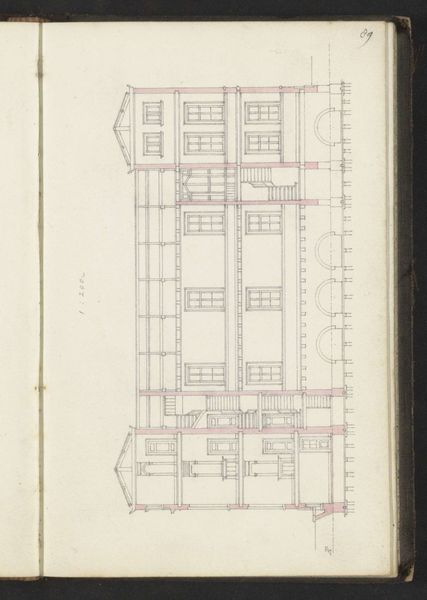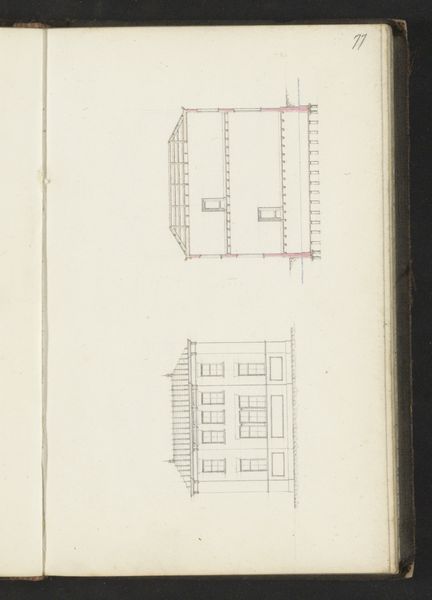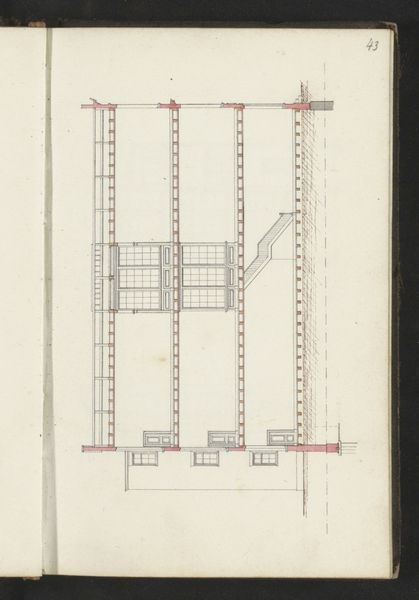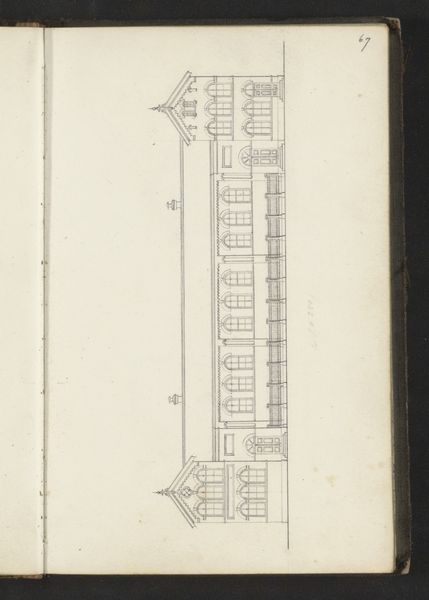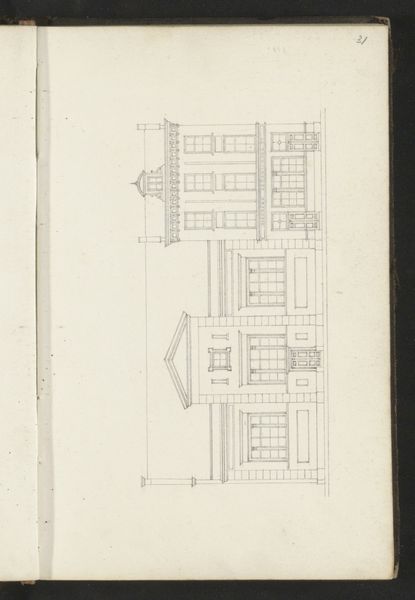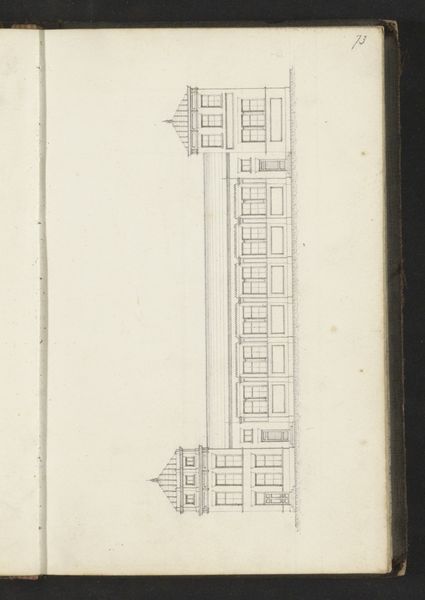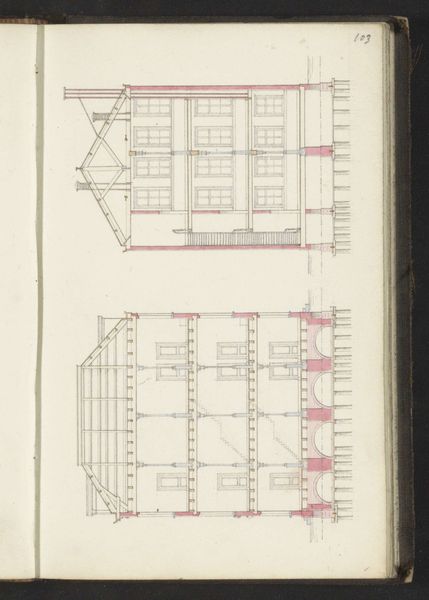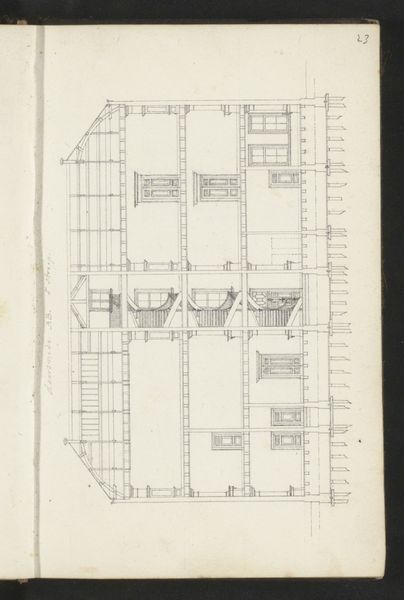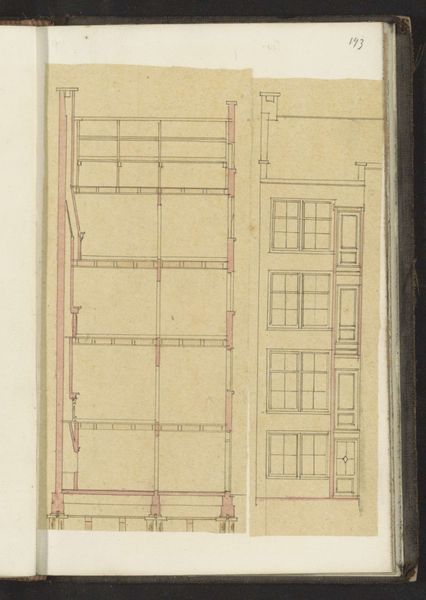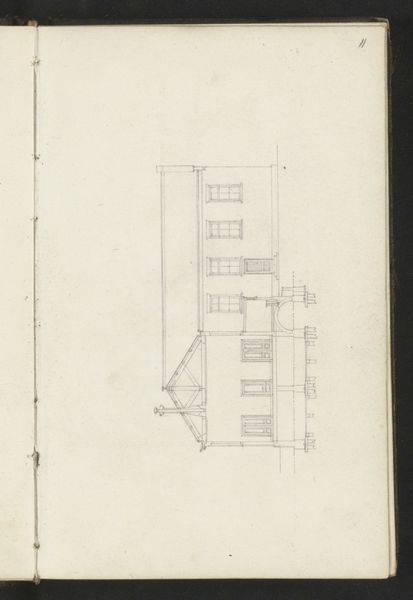
drawing, paper, ink, architecture
#
drawing
#
paper
#
ink
#
geometric
#
line
#
cityscape
#
academic-art
#
architecture
#
building
Copyright: Rijks Museum: Open Domain
Willem Springer Jr. created this architectural study of a building façade and cross-section using graphite and watercolor on paper. Here we see the intersection of craft and industrialization, the handmade and the mass-produced, as Springer depicts a building reliant on both. While he captures the façade’s design elements, the drawing's emphasis on internal structure reveals the labor and materials required for its construction. The regular rhythm of bricks and beams speaks to industrialized production, while the hand-drawn quality highlights the skill involved in architectural planning and design. The watercolor accents bring attention to structural elements, but also hint at interior design choices, layering hand-painted finishes on top of the building's bare bones. This evokes the many hands involved in both building and inhabiting such spaces. By examining the processes of design and construction, Springer's drawing shows the confluence of artistic vision, skilled labor, and industrial production required to shape our built environment.
Comments
No comments
Be the first to comment and join the conversation on the ultimate creative platform.


